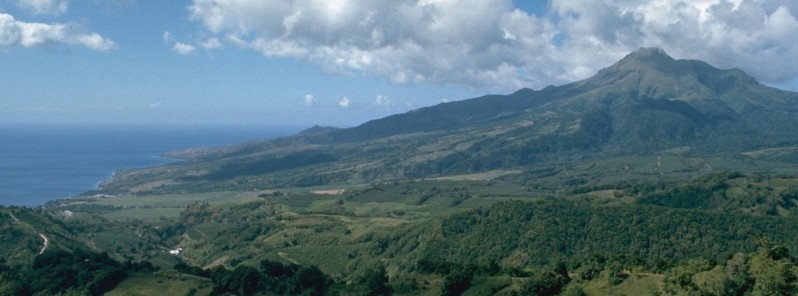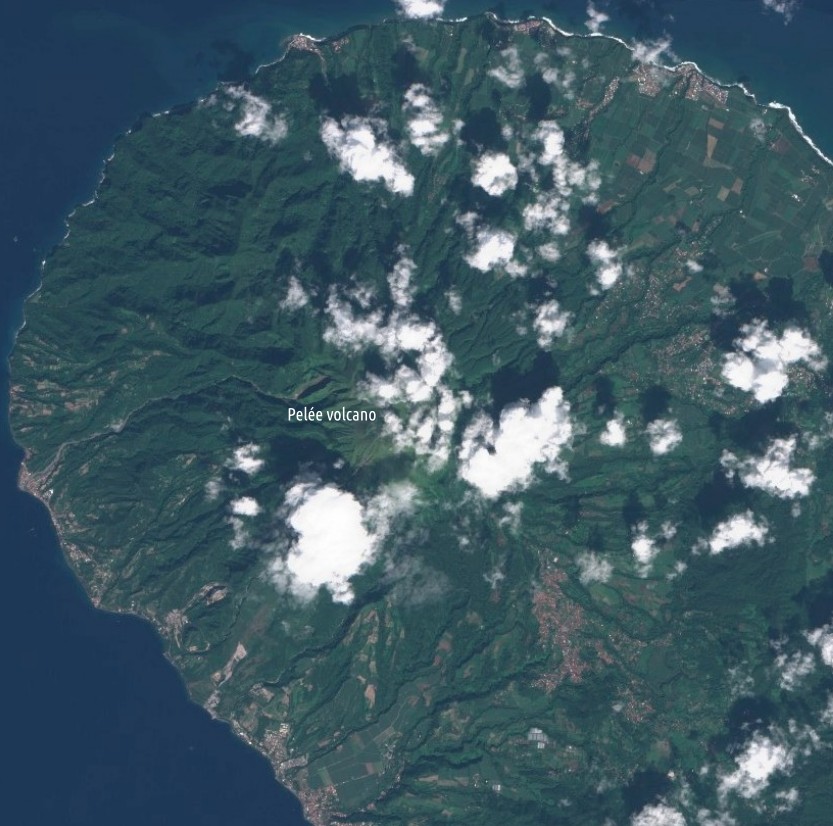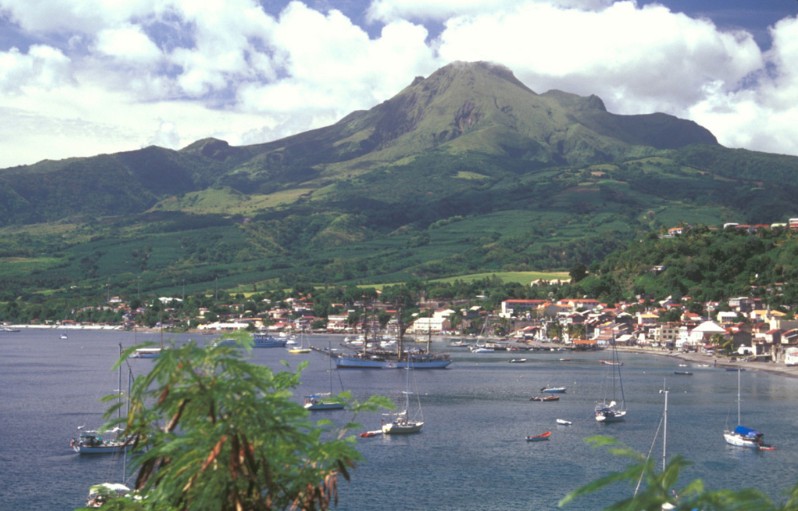Alert level for dangerous Pelée volcano raised to Yellow, Martinique

The Martinique volcanological and seismological observatory of the IPGP has raised the alert level for Pelée volcano to Yellow (2 of 4) on December 4, 2020. The last eruption of this volcano took place in 1932 (VEI 3). Pelée is the deadliest volcano of the 20th century.
- Pelée is forming the northern end of the island of Martinique and is the most active volcano of the Lesser Antilles arc.
- The volcano has a history of VEI 4 eruptions, with the last taking place from 1902 to 1905. This catastrophic eruption destroyed the city of St. Pierre, becoming the type-example of pelean eruptions and marking the onset of modern volcanological studies of the behavior of pyroclastic flows.
Since the modernized observation network was installed in 1980, seismicity of volcanic origin under Pelée was typically low, with a few dozen earthquakes per year.
Earthquake swarms were recorded in 1980, 1985-86, 2007, and 2014. However, the 2007 and 2014 swarms could be directly linked to high magnitude earthquakes in the West Indian arc.
According to the observatory, the increase in seismicity of superficial volcanic origin (up to 4 – 5 km / 2.5 – 3.1 miles) below the summit that started in April 2019 is clearly above the base level characteristic for the volcano.

Pelee volcano on December 4, 2020. Credit: Copernicus EU/Sentinel-2, TW
In addition, in April 2019, volcanic seismicity appeared deep around and under the volcano (more than 10 km / 6.2 miles below sea level), suggesting the arrival of magmatic fluids.
Finally, new tremor-type signals were observed on November 8 and 9, 2020, possibly corresponding to the reactivation of the hydrothermal system.
Research is currently underway to better determine the process at the origin of these signals and in particular a possible influence of heavy precipitation during this period.
Although there is currently no measured deformation of the volcano on the scale of the observation network, the appearance, in a few months, of these three different types of seismic signals of volcanic origin shows a clear change in the behavior of the volcanic system, the activity of which is increasing from the base level observed over several decades.
Consequently, the OVSM-IPGP, after discussion with a group of around twenty experts from the institute, is stepping up its vigilance and recommending the transition to the Yellow alert level, the observatory said.
This change to the Yellow volcanic alert level (2 of 4) corresponds to a strengthening of the observation resources deployed by the OVSM and the mobilization of additional resources (human and instrumental resources) at the IPGP in order to better monitor and analyze the situation in real-time, functioning and evolution of the volcanic system.

Mount Pelée rising above the city of St. Pierre in northern Martinique a century after the catastrophic eruption that destroyed the city in 1902. Image credit: Lee Siebert/Smithsonian
In 1902, devastating pyroclastic flows and surges swept down the SW flank of the volcano early in the morning and destroyed the city of St. Pierre (above), killing 28 000 people in the world's deadliest eruption of the 20th century.
Geological summary
Renowned Montagne Pelée, forming the northern end of the island of Martinique, is the most active volcano of the Lesser Antilles arc.
Three major edifice failures since the late Pleistocene, the last about 9 000 years ago, have left large horseshoe-shaped calderas breached to the SW inside which the modern volcano has been constructed.
More than 20 major eruptions have occurred here during the past 5 000 years.
Extensive pyroclastic-flow deposits, incised by steep-walled ravines, mantle the slopes of the volcano.
The l'Etang Sec summit crater is filled by two lava domes emplaced during the 1902 and 1929 eruptions. Historical eruptions date back to the 18th century; only two modest phreatic or phreatomagmatic eruptions took place prior to 1902.
The catastrophic 1902 eruption, which destroyed the city of St. Pierre, the "Pearl of the Lesser Antilles," became the type-example of pelean eruptions and marked the onset of modern volcanological studies of the behavior of pyroclastic flows.
Featured image credit: Richard Fiske/Smithsonian

2 out of 4? That’s 50%. Bluntly, that’s a “may” happen.
Given how quiet it’s been in 2020 with regards to large volcanic activity, don’t hold your breath.